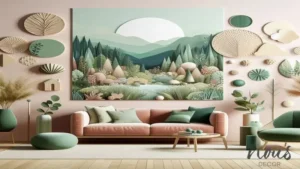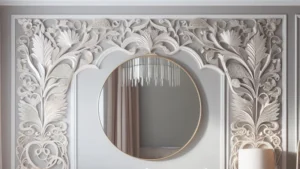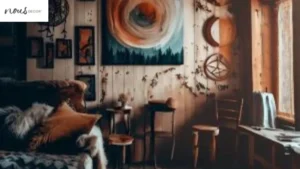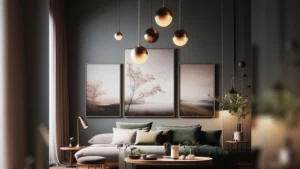Looking to add some sophistication and elegance to your home decor? Why not try minimalist wall art to create a sleek and modern vibe?
Minimalism in art is all about stripping away the excess and focusing on the essentials, resulting in clean lines, simple shapes, and a calming aesthetic. Minimalist wall art can have a powerful impact in any room, from the living room to the bedroom.
Whether you prefer black-and-white photography or abstract paintings, there are endless options to choose from. By incorporating minimalist wall art into your space, you can create a sense of balance and harmony, as well as showcase your personal taste and style.
So why not give it a try and see how it can transform your home with Nousdecor?
Understanding the Principles of Minimalism in Art
You’ll quickly grasp the essence of simplicity and restraint in creating visually powerful pieces when you understand the principles of minimalism in art.
The guiding principle of minimalism is ‘Less is more’ – that is, the idea that a work of art can be made more powerful by using fewer elements.
Minimalist art often contrasts simplicity with complexity, using minimal elements to create a powerful visual impact.
One of the key techniques used in minimalist art is the use of negative space – that is, the space around the subject of contemporary minimalist artwork. By using negative space effectively, minimalist artists can create a sense of balance and harmony in their work.
Essentialism in art is another important principle of minimalism. This means that minimalist art is stripped down to its essential elements, with no extraneous details or distractions.
The power of minimalism lies in its ability to communicate complex ideas and emotions with simplicity and clarity. Minimalist art often focuses on the beauty of simple geometric shapes and lines, and the use of monochromatic color schemes can create a sense of unity and harmony.
By understanding the basic principles of minimalism, you can create visually powerful and emotionally resonant works of art that communicate their message with clarity and simplicity.
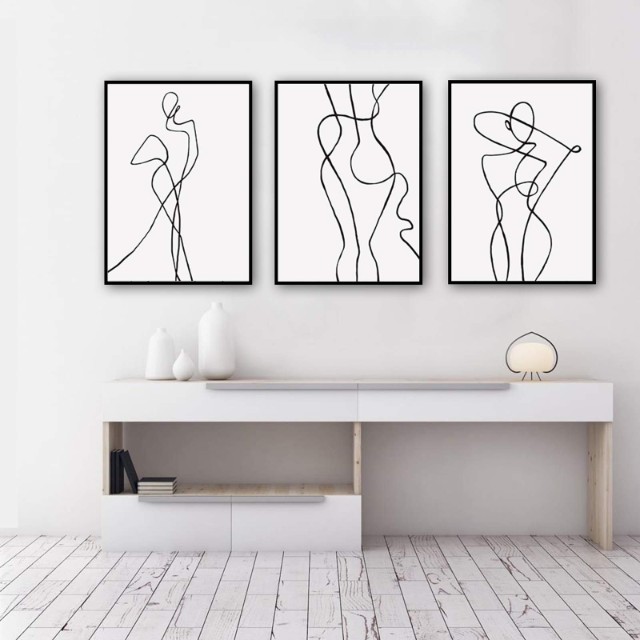
Exploring the Benefits of Minimalist Wall Art
Exploring the advantages of a more simplified and streamlined approach to decorating with visual pieces can yield various positive outcomes.
Unlike Eclectic Wall Art, Minimalist wall art offers a perfect balance of simplicity and elegance that can transform any room into a chic and sophisticated space.
The aesthetic appeal of minimalist wall art lies in its ability to convey a powerful message using only a few well-chosen elements. This type of art is all about showcasing the beauty of simplicity and removing any unnecessary clutter from the visual landscape.
Aside from its aesthetic benefits, minimalist wall art also offers decluttering benefits that can have a calming effect on your mind. By reducing the number of visual elements in a room, you create a sense of space and openness that can help you relax and unwind.
Moreover, minimalist wall art is often available in budget-friendly wall decor options to shop, making it an affordable way to elevate the overall look of your home.
With its simplicity and elegance, minimalist wall art is a great way to add a touch of sophistication to any room without breaking the bank.
Choosing the Right Pieces for Your Minimalistic Wall Art
When it comes to finding the perfect minimalist wall art for your home, choosing pieces that complement your space’s existing color palette and furniture is key.
Take into consideration color schemes and texture options to ensure that the artwork blends seamlessly with your decoration. If your space has a neutral color palette, adding a pop of color with a bold and vibrant piece can add visual interest and personality to the room.
Size considerations are also important when selecting minimalist wall art. A small piece may get lost on a large wall, while a large piece may overwhelm a smaller room. Consider the scale of your space and choose pieces that fit appropriately.
Framing choices can also make a big difference in the overall aesthetic of the artwork. A sleek and minimal frame can give a modern and clean look, while a more ornate frame can add a touch of elegance.
Finally, choose pieces that create a focal point in the room such as modern office wall hangings, drawing the eye to a specific area and enhancing the overall design of your space.
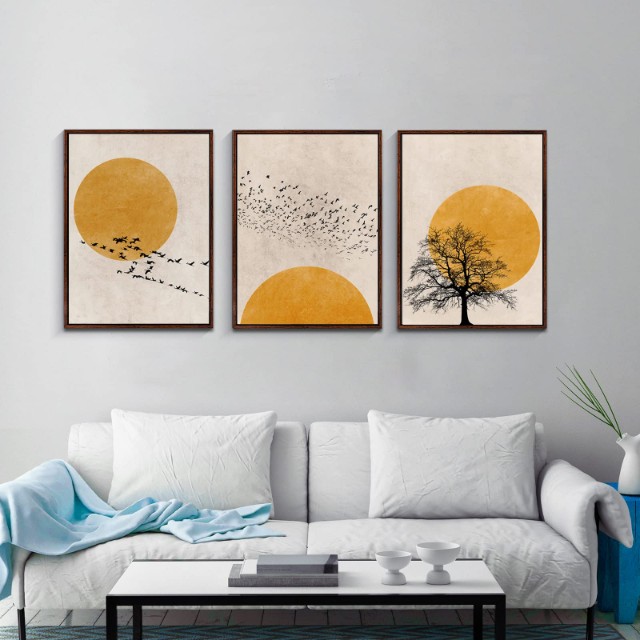
Incorporating Minimalist Wall Art Trend into Your Home Decor
To bring a touch of understated sophistication to your living space, consider integrating minimalist wall art that complements your decor and creates a cohesive aesthetic.
Whether you’re on a tight budget or looking for a statement piece, there are plenty of options to choose from.
Here are some ideas to help you incorporate minimalist wall art into your home decor:
- DIY options: Get creative and make your own minimalist wall art with materials you already have at home or purchase some affordable supplies.
- Budget-friendly ideas: Look for affordable prints, posters, or even frames that are simple yet effective in enhancing your space.
- Mixing textures: Experiment with different textures, such as wood, metal, or even fabric, to add depth and interest to your wall decoration.
- Showcasing personal style: Choose pieces that reflect your personal style and add a unique touch to your space, whether it’s a favorite quote, photograph, or abstract design.
By incorporating these tips, you can elevate your home decor with minimalist wall art that’s both stylish and functional. Whether you’re looking for a subtle accent or a bold statement piece, there are plenty of options to suit your needs and budget.
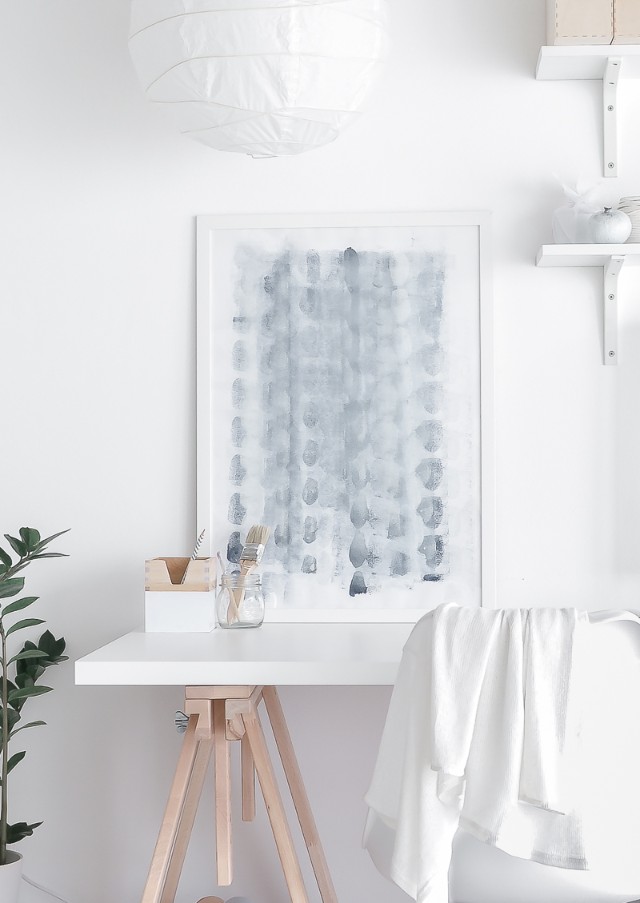
Playing with Color, Size, Shape and Orientation
You can add a playful touch to your space by mixing and matching different Colors, Shape and Orientation in your decoration.
- Experiment with bold contrasts, geometric designs, monochromatic schemes, abstract interpretations, and playful compositions.
- Play with shapes by incorporating circular mirrors or triangular shelves.
- Use contrasting colors like black and white or red and blue to create a bold statement.
To create a monochromatic scheme, stick to one color but vary the shades and textures. For example, try using different shades of blue in your decoration, such as navy, sky blue, and baby blue.
Incorporate abstract interpretations by using minimalist art with asymmetrical shapes and lines. Create playful compositions and sort them by grouping different shapes and colors together on a gallery wall.
With these tips, you can play with colors and shapes to create a fun and unique minimalist wall art display in your home.
| Shape | Color | Texture |
|---|---|---|
| Circle | Blue | Matte |
| Triangle | White | Glossy |
| Square | Red | Textured |
| Rectangle | Black | Shiny |
| Oval | Yellow | Smooth |
Incorporating different shapes, colors, and textures into your minimalist wall art can add depth and interest to your space. By using a mix of these elements, you can create a dynamic and playful display that reflects your unique style.
So go ahead and experiment with different combinations to create a one-of-a-kind minimalist wall art display.
Experimenting with Different Styles For Your Art Subject Collection
Get ready to unleash your creativity and transform your space with a variety of styles that’ll inspire and excite you.
Experimenting with different styles is a great way to add character and personality to your minimalist wall art. Whether you want to play with color contrast or mix different media such as motivational wall art phrases, there’re endless possibilities to explore.
One way to add interest to your minimalist wall art is by playing with texture. Texture play can involve adding different materials such as fabric, paper, or even natural elements like wood or stones. Abstract shapes and geometric patterns can also add depth and complexity to your wall art.
Don’t be afraid to mix and match different styles until you find the perfect combination that speaks to your unique personality and taste. Try experimenting with different techniques and materials until you achieve the desired effect.
With a little creativity and experimentation, you can create stunning minimalist wall art that’ll transform any space.
Creating a cohesive look with your minimalist decoration is all about finding the right balance between different styles and textures. To achieve this, try mixing textures such as wood, metal, and glass to add depth and contrast to your wall art.
Another way to create cohesion is by using consistent framing options throughout your gallery. This could mean selecting frames in the same color, material, or style to tie everything together.
Tips for Creating a Cohesive Look with Minimalist Wall Art
When creating a gallery of minimalist wall art, it’s important to consider the negative space in between each piece. Leaving enough space between each frame can help create a clean and organized look.
DIY options can also add a personal touch to your gallery and make it unique. Consider creating your own artwork or framing sentimental items, such as old postcards or tickets.
By following these tips, you can create a visually appealing and cohesive display of minimalist wall art.
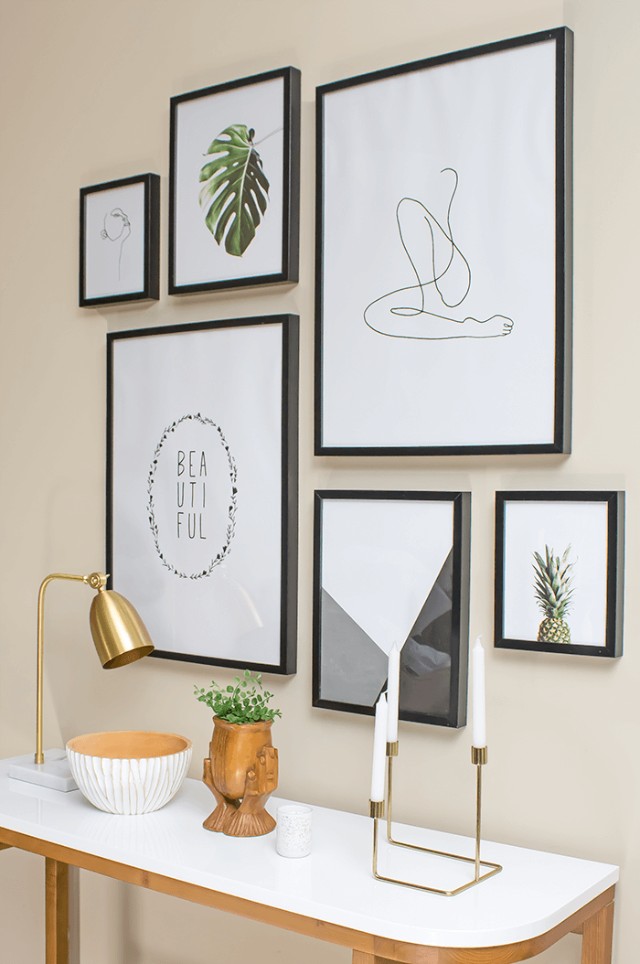
Frequently Asked Questions
Conclusion
Congratulations! You’ve now learned the principles of minimalist wall art and how it can enhance your home decor.
By choosing the right pieces and incorporating them into your space, you can transform your walls into a beautiful and cohesive work of art.
Remember to play with colors and shapes, and experiment with different styles to find what works best for you. Whether you prefer bold and striking pieces or subtle and understated designs, there’s a minimalist wall art piece out there for everyone.
With these tips in mind, you can create a space that’s both elegant and functional while reflecting your personal style. So go ahead and add some minimalist wall art to your home decor and enjoy the benefits of a beautiful, calming space.
If such minimalism isn’t for you, perhaps you can take a look at the total opposite: Art Deco Wall Decor!

